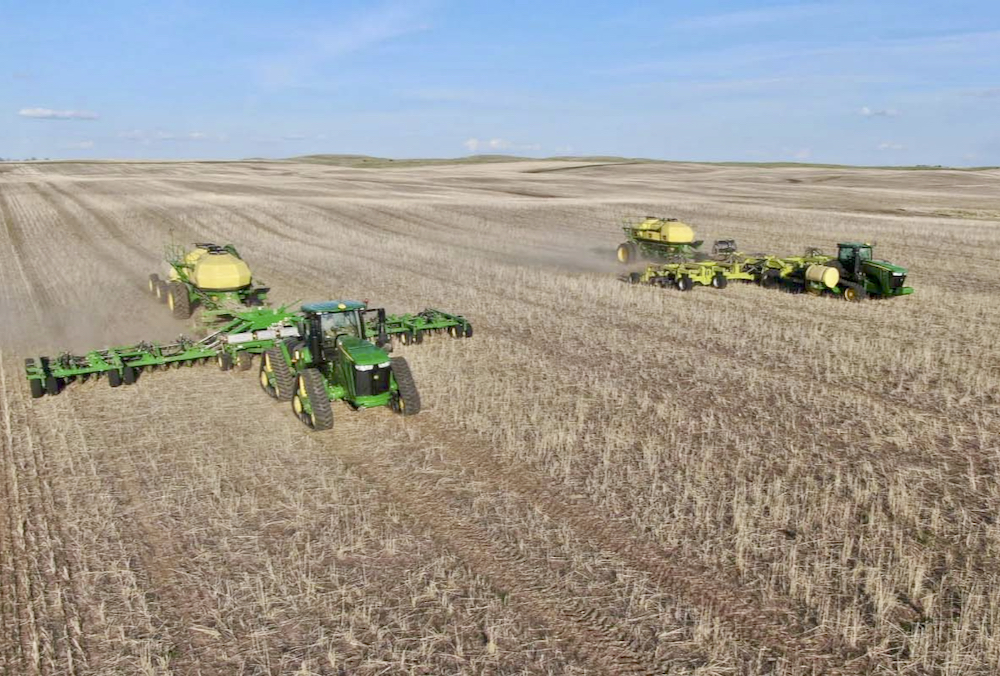
Did you know soil compaction can reduce crop yields by up to 50%? For farmers, the hidden costs of this problem can add up quickly. Soil compaction is caused by heavy equipment traffic, tillage implements, and extreme weather events, which force soil particles together and reduce the storage spaces needed for air, water, and root growth. Fortunately, beneficial soil bacteria and fungi offer a way to improve compacted soils and productivity biologically, without relying on costly mechanical methods.
The Cost of Compaction
Soil compaction reduces crop yields by impairing the soil’s ability to support healthy plant growth. Here’s how:
1. Restricted Root Growth
Compaction can be present as a dense layer often called hardpan that roots struggle to grow through, limiting access to essential nutrients and water deeper in the soil profile. This directly impacts the plant’s ability to thrive.
2. Reduced Water Infiltration
When soil particles are tightly packed, water cannot seep in. Instead, water pools on the surface, increasing evaporation, runoff and topsoil erosion while leaving the roots dry. This is an issue particularly in regions with limited rainfall.
3. Lower Yields
Researchers agree that compacted soils can lead to yield losses but the range is quite wide (ranging from 10% to over 50%) depending on the crop and soil type.
4. Increased Costs
To combat compaction, many farmers turn to deep ripping or subsoiling. While these methods can temporarily alleviate the problem, they are costly, labor-intensive, and can disturb the soil ecosystem.
While effective in the short term, both methods require significant investment in machinery and fuel, and their long-term impact on soil health can be mixed.
Beneficial soil bacteria and fungi, like those found in H-Start, offer a long-term, cost-effective solution to address soil compaction. By improving soil structure and fostering healthy root systems, these microbes transform compacted fields and improve productivity. Here’s how they work:
1. Promote Root Growth and Development
Certain microbes enhance root growth through increased growth hormone production, improved water and nutrient uptake, and providing stress tolerance to the plant. Stronger roots penetrate compacted layers more effectively, breaking up the soil naturally over time. Improved root systems allow crops to survive better in challenging conditions.
2. Add Fungi and Bacteria to Break Up Compaction
Microbes secrete substances that act as soil conditioners, loosening compacted layers and improving porosity. Fungi create filament networks binding soil particles into stable aggregates that enhance soil structure and increase aeration.
3. Increase Water Infiltration
By improving soil structure, beneficial microbes allow water to infiltrate more easily. This reduces surface runoff, allowing more water to reach the roots where it’s needed most. Better water infiltration also means fields can handle heavy rains without becoming waterlogged.
4. Reduce the Need for Costly Subsoiling
Using microbial solutions as part of your soil management strategy minimizes the need for mechanical solutions. Not only does this save time and money, but it also preserves the natural soil ecosystem, supporting long-term productivity.
5. Organic Matter Decomposition
Beneficial microbes break down plant material in the soil, resulting in humus—a stable, nutrient-rich substance that improves soil structure. This process enhances soil aggregation and porosity, which loosens compacted layers, increases water infiltration, and allows for deep root growth. Over time, these natural processes can reduce compaction and foster robust soil ecosystems.
Soil compaction doesn’t have to mean inconsistent yields and field management challenges. The diverse microbes in H-Start provide a biologically proven way to enhance root growth, increase water movement, and stabilize soil structure in the compacted areas of your field.
Ready to see how beneficial microbes can work for your operation? Contact Us to learn more.
Read more about the impacts of soil compaction:
Western Producer: Compaction can put you in a hard spot
Iowa State University: Understanding & Managing Soil Compaction (downloadable PDF)
Iowa State University: Soil Compaction and What You Can do About It
PennState Extension: Effects of Soil Compaction